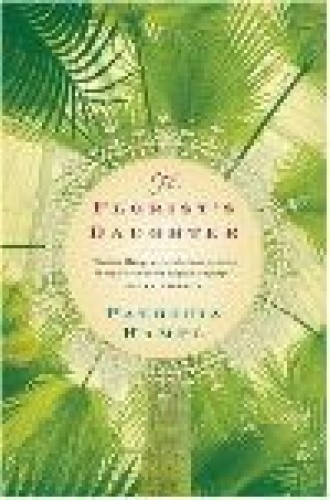The Florist's Daughter
Writers of memoirs used to be people who had explored the North Pole or starred in films or run for president; their writing was a final act of summary. These days memoirs are more often ordinary people’s chronicles of unfolding discoveries. They present life as a work in progress or a spiritual quest in which the author pays attention to the past to gain new insight.
One of the best practitioners of the genre is Patricia Hampl, as she shows in her lovely fifth memoir, The Florist’s Daughter, in which she pays tribute to the lives of her parents in St. Paul, Minnesota. “These apparently ordinary people in our ordinary town, living faultlessly ordinary lives, and believing themselves to be ordinary, why do I persist in thinking—knowing—they weren’t ordinary at all?”
It’s a tough assignment; as Hampl acknowledges, “Nothing is harder to grasp than a relentlessly modest life.” She sees her memoir work as a sort of travel writing. In a previous narrative, I Could Tell You Stories, she writes that she’s “moving through it all faithfully, not so much a survivor with a harrowing tale to tell as that older sort of traveler, the pilgrim, seeking, wondering.”
In snapshot after snapshot, she brings into sharp focus her mother, Mary, an Irish Catholic, and her father, Stanislaus, a handsome Czech florist. From the Czech side of the family she learns that “you can look back, but never look beyond.” The Irish, on the other hand, “lived the dangerous dreams of the imagination.” This heritage of remembrance and imagination drives her stories.
Hampl’s florist father sensitized her to appreciating every moment. “To toss money at fleeting beauty—this was the point of buying flowers. Not their beauty, but their transience.” She learned to crystallize transient moments in time, capturing the brief splendor of the seemingly commonplace. Her father also had “resilient faith in the educative powers of just looking.” He often took Patricia and her springer spaniel, Buddy, for rides in the Minnesota countryside. “‘Just look at that,’ he would say to me or to Buddy, to anyone with eyes to see.”
It’s no wonder that Hampl, a regent’s professor who teaches creative writing at the University of Minnesota, is able to mine her past for vivid colors and images. As she unfolds scene after scene, she uses a cornucopia of adjectives—“the narrow powder-pink boxes with the gold logo”—and mixes the ecclesiastical with the everyday: “communion-wafer white.”
The sacred and the ordinary mingle elsewhere. As her father provided “glittering things”—sumptuous gardens, lavish floral decorations for dinner parties—to the wealthy matrons of St. Paul, Hampl reflects, “This surface loveliness was the outward and visible sign, as the nuns taught us about the sacraments, of an inward and spiritual grace, the communion of civic good he believed in, the market economy as sacramental rite.” Beauty was essential, holy.
Hampl inspects her past from every angle, sometimes just looking, other times digging for meaning. To put these things on paper is, perhaps, to “offer them up,” as the nuns and Hampl’s mother told her to do with anything difficult. In Spillville, an earlier book of essays, Hampl notes: “It’s the faith that this helpless thing, lyric perception, is an authentic response to the world’s impossible contradictions which seem to resolve themselves, finally, as beauty.”
The ambition of Hampl’s epileptic mother was to turn her daughter into an observer, a notetaker, “the smart cookie unconvinced of surfaces, unpersuaded by good intentions, preternaturally watchful.” As her mother recounted story after story to her daughter, she used painstaking detail to reconstruct events and scenes. Hampl paid rapt attention, knowing that her mother’s epileptic seizures could happen anytime. “This gave her storytelling a heart-stopping note of suspense and danger.” With this storytelling, Hampl says, her mother taught her about writing without ever penning a word.
Like an artist creating a collage, Hampl layers her new essays over remnants of her previous memoirs (A Romantic Education, Virgin Time, I Could Tell You Stories, Blue Arabesque). Her readers will recognize certain anecdotes—the death of her Uncle Frankie in a horrific brewery accident, a childhood scene about power and social status—and the liberal sprinkling of F. Scott Fitzgerald references throughout. Some may find the repetition irksome, others will read the familiar passages with the pleasure of encountering old friends.
A Jewish proverb tells us: “In remembrance is the secret of redemption.” If memory is also the “tabernacle of human experience,” as Hampl says, then her stories form a testament to its beauty and power. The gift of The Florist’s Daughter is to remind us of the transformative value of remembering and paying attention to our lives, no matter how ordinary they seem.





